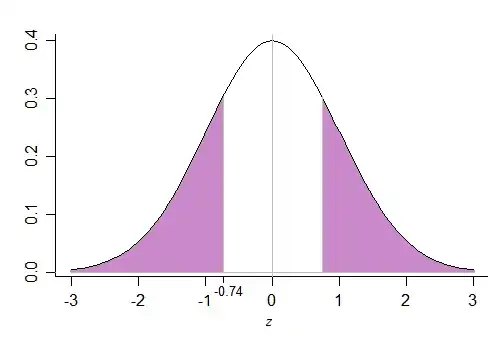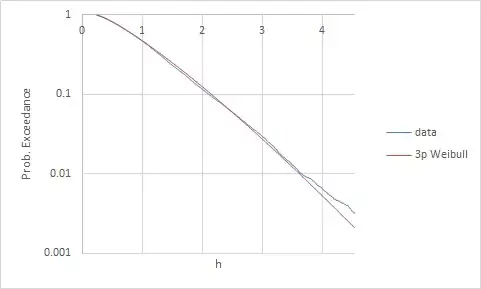It appears that you're doing a hypothesis test of proportions.
You have $H_0: p = 0.65$ vs $H_1: p\neq 0.65$, using a normal approximation to the distribution of the standardized proportion (corresponding to a normal approximation to the binomial).
In a sample of $n=50$ you have an observed number of successes of $30$, giving a sample proportion of $0.6$.
The total area you want for your two tailed p-value is this:

You can do that by finding the area to the left of -0.74 and then doubling it.
The area to the left of $-0.74$ can be found directly in the tables you have, but you didn't look them up correctly.
[Your question now shows this calculation correctly, but at the time I was composing this part of the answer it didn't and I didn't notice you had changed that some time after I posted my answer. I have left the discussion of the incorrect table-lookup here even though you understand how to do it now, because it may nevertheless prove useful to the next person.]
You (originally) looked up -0.07 (you looked at the row for -0.0 and then the column for .07) but you need to look up the row for -0.7, and then the column for 0.04:

That gives 0.2296 (as your question now shows, so you understand up to here now).
You then subtracted your area from 1 and doubled. In this case you should simply double the area to get the area in both tails. [The subtract-from-1 works with the table you have for $z$ values that are non-negative, to give upper-tail areas, which you would then double to get two-tails, but you are not in a situation here where $z\geq 0$, so you're not calculating an upper tail area.]
I'd strongly advise always drawing a diagram like the one above so that you can see the calculation you need to be doing.
[Alternatively, for a two-tailed test such as this, you could follow GeoMatt's advice in comments of always looking up the absolute value of $z$, (by dropping the sign when it's negative) and then doing the "subtract from 1 then double" action that otherwise works for $z>0$.]

